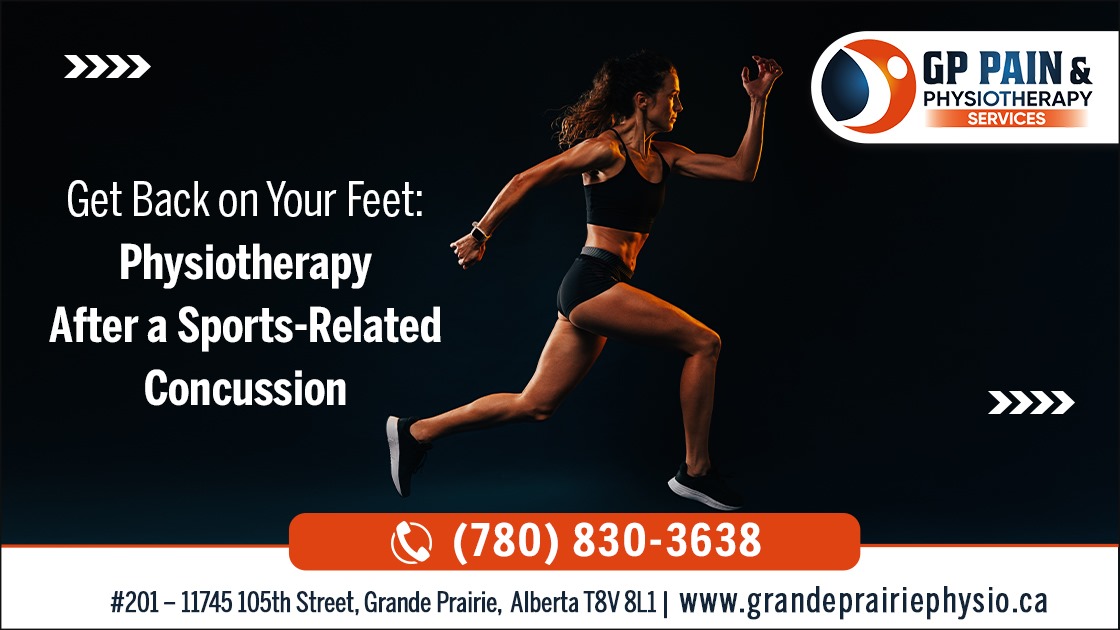
Athletes recovering from an injury need more than just rest and traditional physical therapy; they require functional exercises that mimic the demands of their sport to regain strength, agility, and endurance. Functional rehabilitation focuses on restoring movement patterns specific to an athlete’s activity, ensuring a safe and effective return to play. At GP Pain & Physiotherapy , we incorporate functional exercises into our Sports physiotherapy Grande Prairie programs, helping athletes rebuild strength, improve mobility, and reduce the risk of reinjury.
What Are Functional Exercises?
Functional exercises are sport-specific movements designed to improve stability, strength, coordination, and agility in a way that translates directly to athletic performance. Unlike isolated exercises that focus on a single muscle, functional training involves multiple joints and muscle groups working together, which is essential for restoring an athlete’s full movement capacity.
Benefits of Functional Exercises in Sports Rehabilitation
✔ Restores sport-specific movements – Exercises replicate real-game motions to improve performance and confidence.
✔ Enhances strength and stability – Strengthens muscles, tendons, and ligaments to support injured areas.
✔ Improves coordination and agility – Encourages better balance, reaction time, and movement efficiency.
✔ Reduces the risk of reinjury – Helps athletes return to their sport with proper mechanics and movement control.
Key Functional Exercises for Sports Rehabilitation
At GP Pain & Physiotherapy, we customize rehabilitation programs based on the athlete’s sport, injury type, and recovery stage.
Squats and Lunges for Lower Body Strength
✔ Target Areas: Quadriceps, hamstrings, glutes, and core.
✔ Squats and lunges help restore leg strength, knee stability, and joint mobility, making them essential for sports like soccer, basketball, and hockey.
✔ Variations such as single-leg lunges, weighted squats, or jump squats can further improve explosiveness and endurance.
Plyometric Training for Power and Speed
✔ Target Areas: Fast-twitch muscle fibers, lower body strength, and neuromuscular coordination.
✔ Jump training, box jumps, and lateral hops help athletes regain explosiveness and agility, crucial for sports that involve sprinting and quick directional changes.
Core Stabilization for Balance and Control
✔ Target Areas: Abdominals, obliques, and lower back.
✔ A strong core is essential for stability, posture, and injury prevention.
✔ Functional exercises like planks, Russian twists, and stability ball rollouts help athletes improve core endurance and protect against lower back injuries.
Resistance Band Drills for Joint Stability
✔ Target Areas: Shoulders, knees, and hips.
✔ Resistance bands provide controlled resistance for strengthening weak or injured joints while preventing excessive strain.
✔ Ideal for rehabilitating shoulder injuries in sports like baseball, tennis, and swimming.
Balance and Proprioception Drills
✔ Target Areas: Ankles, knees, and overall body awareness.
✔ Balance boards, single-leg stands, and stability ball exercises help retrain the body’s ability to sense position and movement, which is critical after an injury.
✔ Beneficial for sports that require agility and precise movements, such as skiing, gymnastics, and martial arts.
Sport-Specific Movement Drills
✔ Target Areas: The entire kinetic chain involved in the athlete’s sport.
✔ Incorporating drills that replicate game movements ensures a smooth transition back to competition.
✔ Examples: Lateral shuffles for basketball players, cutting drills for football players, and kicking drills for soccer athletes.
When to Start Functional Exercises?
✔ Phase 1: Early Rehabilitation – Focuses on pain management, range of motion, and light strength training.
✔ Phase 2: Strength & Mobility Training – Introduces low-impact functional exercises to restore movement.
✔ Phase 3: Functional Training – Includes sport-specific drills and high-intensity exercises for a safe return to competition.
Conclusion
Recovering from a sports injury requires more than just passive treatment—it demands functional rehabilitation to restore strength, mobility, and performance. At GP Pain & Physiotherapy in Grande Prairie, our sports physiotherapy programs use functional exercises to help athletes recover efficiently and reduce the risk of reinjury. If you’re looking for a structured rehab plan to get back in the game, contact us today and let us help you return to peak performance!
#sportsinjuryphysiotherapygrandeprairie #sportsinjuryphysiotherapy #sportsinjuryphysiotherapynearme #gppainphysicaltherapy #grandeprairiephysiotherapy #physiotherapynearme #physiotherapygrandeprairie #physicaltherapygrandeprairie #physicaltherapynearme #physicaltherapy #physiotherapistclinic #physiotherapytclinic #physicaltherapyclinic